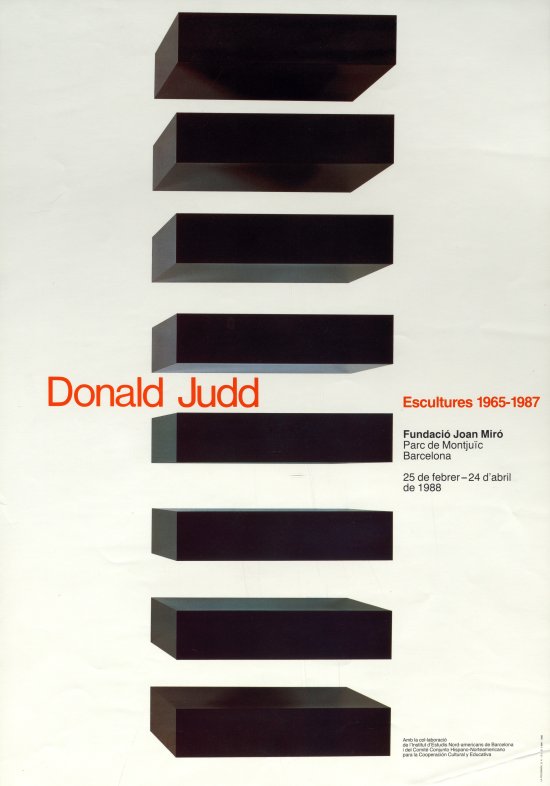- Dates
- —
- Curated by
- Rudi Fuchs
Donald Judd: Sculptures 1965-1987
The form of three-dimensional art known as ‘minimal art’ emerged in the United States in the early 1960s. It was partly a response to post-war American painting, ‘abstract expressionism’ (for example, Jackson Pollock), which was seen as an expression of personal feelings, but also as an immediate reality transferred to the painted surface. It also expressed a rejection of traditional painting, in which an artistic composition showed a calculated balance between parts (for example, between forms, colours, figures and background). Part of the generation of artists who came of age in the 1960s thus sought to suppress subjective expression, compositional concerns and the illusionism of images (figures, landscapes) in favour of an art that would possess human dimensions, be produced in factories and use industrial materials and geometric and modular forms. In other words, geometry, industry and mathematical systems (repetition, in series or in grid structures) seemed to replace subjectively conceived, hand-made images. Donald Judd (b. 1928) was one of the pioneers of this movement, along with Cari André, Dan Flavin and Sol LeWitt.
Minimal art corresponded to a new way of looking at the world. For these artists, reality was urban and concrete, not the illusionistic images of earlier art. Their goal was to create physical objects that existed as real objects in the viewer’s real space. Minimalist objects exist in our world. They attempt to intensify the viewer’s experience of their existence in this world. They heighten the perception of their own scale in relation to that of themselves. They focus the intellectual, physical and emotional responses in relation to everyday phenomena such as colour, volume, transparency, depth, reflection, proportion, repetition and interrelationships.
These objects transform the aesthetic experience into an immediate physical (yet also emotional and intellectual) experience, comparable, one might say, to architecture. Different spaces, different materials or different light in architecture produce distinct sensations and a different emotional response (we do not react in the same way to the interior of a church as we do to a railway station). This is true of Judd’s sculptures in general and of each of them in particular. And because each work reflects a number of personal choices (of forms, colours, materials, juxtapositions), these works are personalised and express the artist’s subjectivity. The vision that Judd and his objects offer us is intended to assist us in understanding some of the principles that govern the modern world in which we live.


